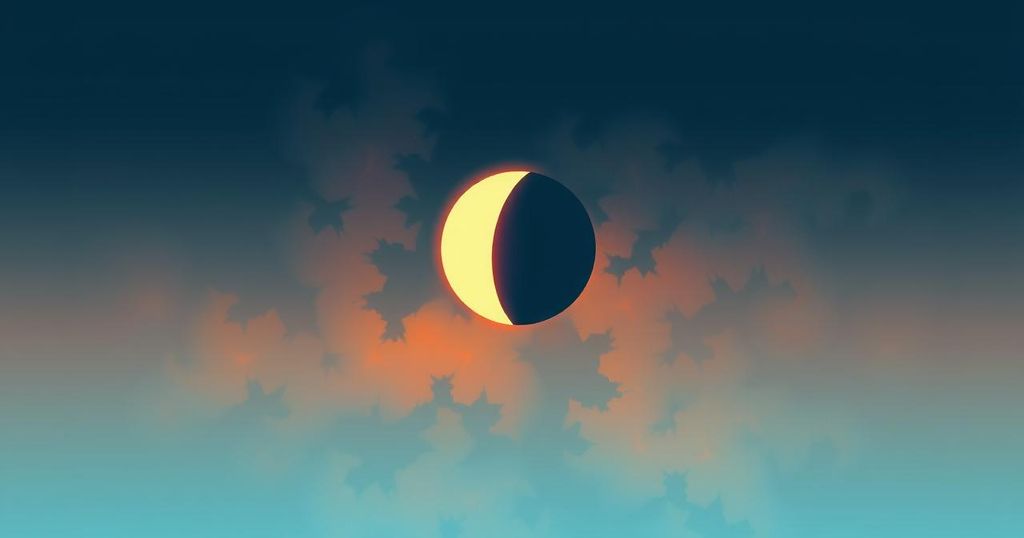Partial Solar Eclipse Enlivens the Northern Hemisphere Today

A partial solar eclipse is occurring today, visible from the northern hemisphere, lasting approximately four hours. Astronomer Florent Deleflie states the event begins at 8:50 AM UTC, with locations in Mauritania and Morocco being the first viewers. Proper eye protection is essential due to potential eye damage from sunlight during the eclipse.
Today, the sun and moon will align, resulting in a partial solar eclipse observable from parts of the northern hemisphere, ranging from eastern Canada to Siberia. This eclipse marks the 17th in the 21st century and will last approximately four hours, starting at 8:50 AM UTC and concluding around 12:43 PM UTC.
According to Florent Deleflie, an astronomer from the Paris-PSL Observatory, the first viewers will be in Mauritania and Morocco, while northern Siberia will be the last location to witness the phenomenon. The Time and Space Laboratory at the Paris Observatory confirms that the partial eclipse will also be visible in Europe, peaking at 10:47 AM UTC over northeastern Canada and Greenland, where up to 90% of the sun’s disk will be obscured.
A solar eclipse occurs when the sun, moon, and Earth align closely. In this instance, the alignment was not sufficient for the moon’s shadow to reach the Earth, preventing a total eclipse from occurring. Deleflie illustrates this by stating that “the alignment was not perfect enough for the shadow cone to touch the Earth’s surface.”
In France, the eclipse will be seen between 10:00 AM and 12:00 PM UTC, blocking 10% to 30% of the sun’s disk based on location. From the naked eye, changes will be minimal, but with clear skies and proper eye protection, observers can appreciate the event. Protective eyewear is vital, as exposure to direct sunlight during an eclipse can cause severe eye damage.
The recent lunar eclipse that led to a “red” moon occurred two weeks ago, which Deleflie describes as a routine occurrence, as the moon is halfway through its cycle. The last partial solar eclipse in mainland France was on October 25, 2022. Future interest includes a total solar eclipse on August 12, 2026, which will obscure 92% of the sun in Paris and 96% in Marseille.
In conclusion, today’s partial solar eclipse presents a remarkable astronomical event visible across various regions, particularly in the northern hemisphere. Observers must ensure proper eye protection due to the potent sunlight. This eclipse’s occurrence shortly after a lunar eclipse underscores the cyclical nature of celestial phenomena. Furthermore, enthusiasts look forward to the upcoming total solar eclipse in 2026, despite its path missing France directly.
Original Source: www.jordannews.jo







